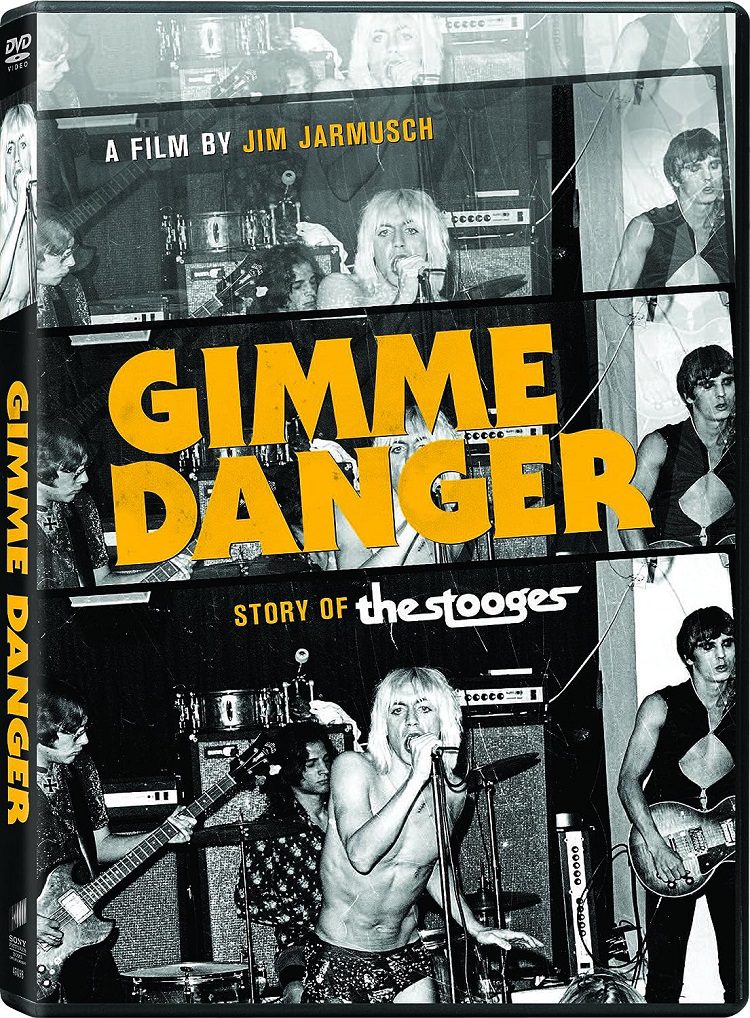
Written by Glen Boyd
From the first few minutes of Gimme Danger, Jim Jarmusch’s loving tribute to Iggy and the Stooges, the director makes his unabashed fandom abundantly clear – even going so far as to label them “the greatest rock and roll band ever ” (a claim repeated numerous times throughout the film). While that label is debatable at best, there is still no denying the enormous influence of the Stooges on a subsequent generation of rock bands ranging from the Ramones and the Clash, to Sonic Youth and Nirvana.
Jarmusch is of course no stranger to the rock-doc form, with a resume that also includes the Neil Young and Crazy Horse documentary Year Of The Horse. With Gimme Danger he tells the story of the Stooges transformation from under-appreciated fuck-ups and commercial disappointments no one seemed to know what to do with during their initial three-album run from roughly 1968-1973, to their triumphant renaissance, reunion, and ultimate recognition as iconic Rock & Roll Hall of Fame inductees some three decades after the fact.
Even so, there is a sense of missed opportunities here.
Given both the subject matter and Jarmusch’s obvious level of fandom, the most surprising thing about Gimme Danger is the lack of any new revelations in a story one would think would be rife with them. While it is somewhat understandable – and even applaudable – that Jarmusch would choose to focus on the music, the aura of drugs, decadence, and debauchery that surrounded the Stooges and certainly played a major role in their early flame-out is mostly reduced to a footnote here. We learn how Iggy got clean (the first time) by obtaining methadone through a family pharmacist friend; being dropped by CBS less than a year after the release of Raw Power; and being kicked out of a safe house set up for the Stooges by then-manager Tony De Fries shortly afterwards.
But that’s it.
Iggy Pop’s initial post-Stooges solo work with David Bowie on the classic albums The Idiot and Lust For Life is also strangely ignored. Such chaotic final shows as the one documented on the now hard-to-find, but legendary cult-classic Metallic K.O. barely register a blip here (although there is a brief audio clip from that recording documenting the band dodging the bottles they were being pelted with by the audience). The lack of any decent new live footage from those original Stooges shows is also frustrating, although a short clip of the Stooges concert that produced the now famous image of Iggy inventing crowd surfing adds a nice touch.
But the surprises mostly end there.
In a backdrop of interviews with Iggy conducted somewhere where he is surrounded by an impressive collection of skulls, we learn about his beginnings growing up in a trailer in Michigan with his parents and playing drums in early bands like the Iguanas, before finally meeting the Asheton brothers and forming the Psychedelic Stooges in Ann Arbor. The story of piggy-backing their first record deal with Elektra as the “little brother band” of the MC5 with manager Danny Fields is also recounted, as is the story of a phone call to Moe Howard of the Three Stooges to ask his permission to call their band The Stooges.
There are brief tidbits about an early affair between Iggy and Nico; Iggy turning down Detroit radical-politics icon John Sinclair’s offer to share the bill with MC5 at the ill-fated demonstrations outside the 1968 Democrartic Convention in Chicago; and how Iggy bought his trademark dog collar from a Santa Monica pet shop called the Bowser Boutique.
But otherwise, Gimme Danger offers little in the way of anything new for those already familiar with the story of both the original Stooges with the Asheton brothers and Dave Alexander, and the latter Raw Power incarnation – now dubbed Iggy and the Stooges – with guitarist James Williamson. Even so, Jim Jarmusch ‘s Gimme Danger is a long overdue official history lesson documenting the “greatest rock and roll band ever.” Or, at least one of them.
The DVD release of Gimme Danger comes with no extras, and is dedicated to the memory of Ron and Scott Asheton (both featured prominently in interviews here), Dave Alexander, and saxophonist (and occasional drummer) Steve Mackay.